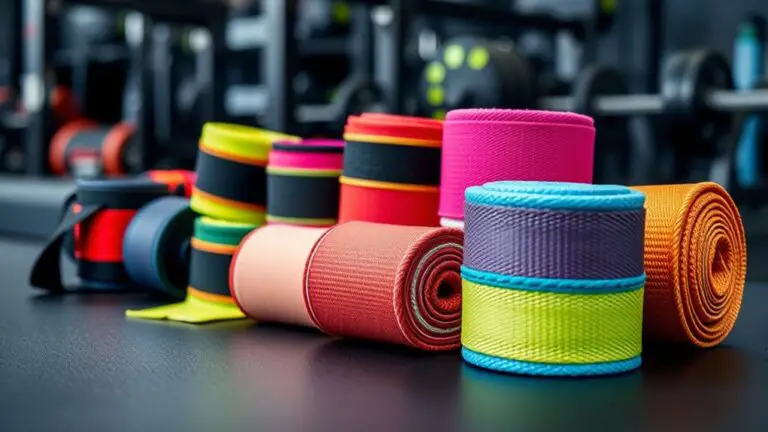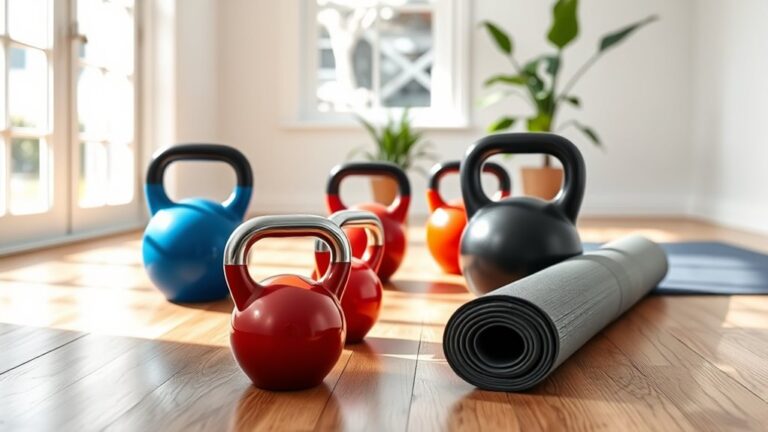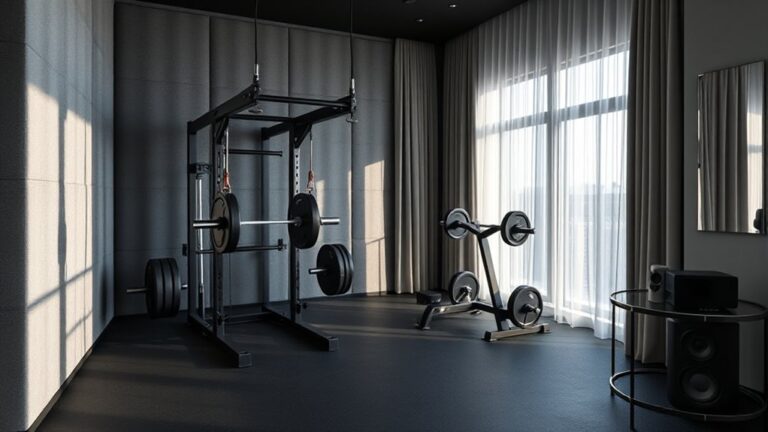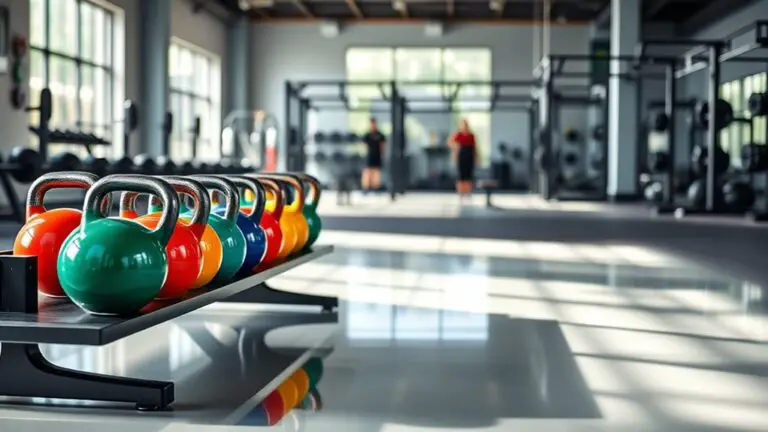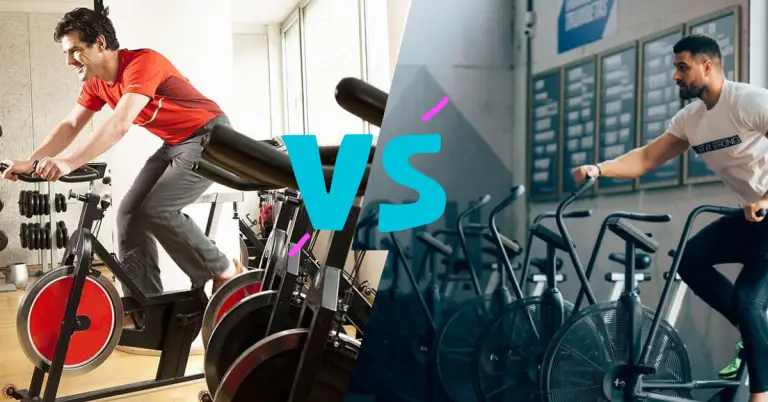How to Avoid Buying Useless Gym Equipment
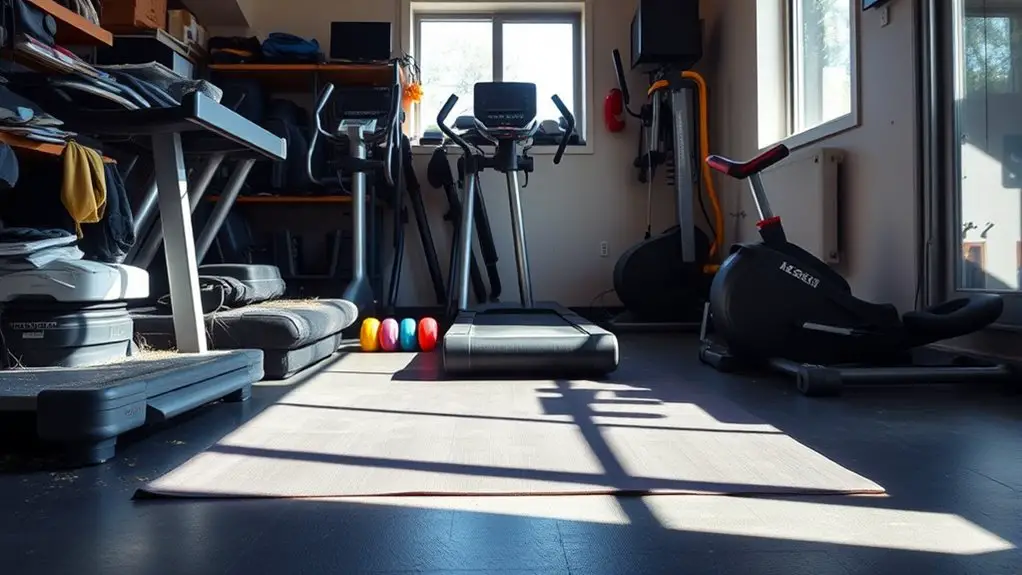
To avoid buying useless gym equipment, start by clearly defining your fitness goals. Research versatile, high-quality gear that suits your space and budget. Prioritize multi-use machines or compact options to maximize functionality. Always test equipment before purchasing and seek professional advice for tailored recommendations. Resist trendy items that may not align with your long-term goals. For deeper insights into making smart buying decisions, you’ll find more valuable tips up ahead.
Define Your Fitness Goals
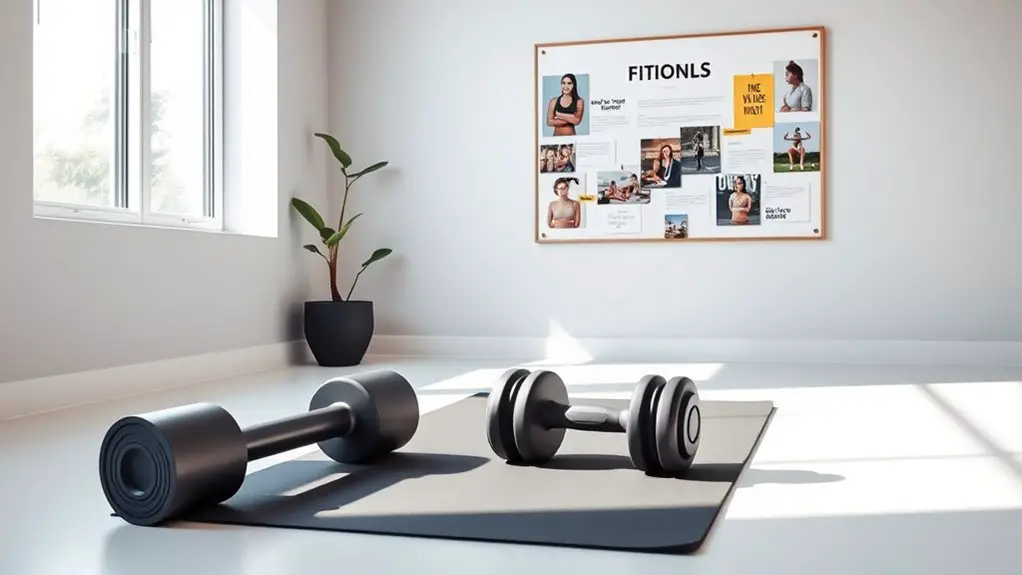
Before you even think about purchasing gym equipment, it’s essential to define your fitness goals. A personal fitness assessment is a great starting point. It helps you understand your current fitness level, strengths, and areas needing improvement. By evaluating these factors, you can create realistic and attainable goals that align with your lifestyle.
Next, implement effective goal setting strategies. Consider whether you want to lose weight, build muscle, or improve endurance. Each goal requires specific equipment and training methods. For instance, if you’re aiming to increase your strength, you might need weights or resistance bands, while runners may benefit more from a quality treadmill. Additionally, understanding your daily caloric intake can guide you in selecting the right equipment and training plan to meet your fitness objectives.
Research Essential Equipment
When it comes to building your home gym, identifying must-have gear is essential. Focus on versatile equipment that can support a variety of workouts and adapt to your evolving fitness goals. This way, you won’t waste money on items that end up gathering dust in the corner. Utilizing a home gym calculator can help you optimize your spending and ensure you’re making informed purchases.
Identify Must-Have Gear
As you commence your fitness journey, identifying must-have gear is essential to making informed purchases that truly enhance your workouts. Start by considering the equipment that aligns with your fitness goals. If you’re focused on strength training, free weights and resistance bands are must-have essentials. For cardio, a quality jump rope or a treadmill can elevate your routine. Look for items that promote effective workouts without cluttering your space. Research reviews and seek recommendations to guarantee you’re investing in durable and reliable gear. Remember, it’s not about having every gadget on the market; it’s about selecting the right tools that will support your progress and keep you motivated. Focus on quality over quantity, and you’ll set yourself up for success.
Prioritize Versatile Equipment
Versatile equipment can be a game changer in your fitness routine. By investing in pieces that serve multiple purposes, you’ll maximize your workouts and minimize clutter. Consider these essential items:
- Multi-use machines: These allow you to perform various exercises, targeting different muscle groups without needing separate machines.
- Adjustable weights: They let you easily increase or decrease resistance, making them perfect for progressive overload in your strength training.
- Compact designs: Look for equipment that fits your space while still offering functionality, like foldable benches or resistance bands.
Focusing on functional training equipment not only saves money but also enhances your overall fitness experience. So, prioritize versatile gear, and you’ll see significant improvements in your workouts!
Consider Space and Storage
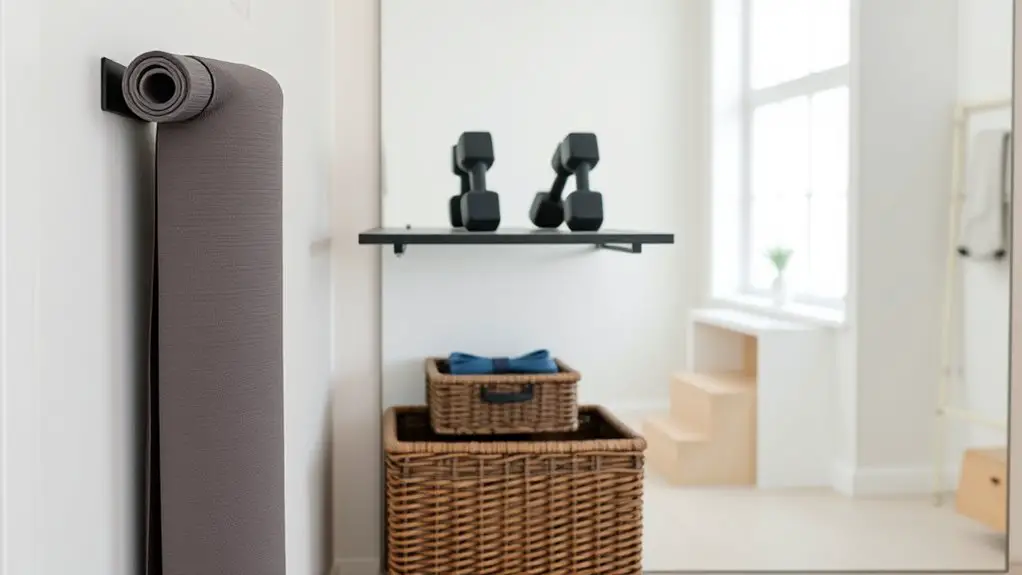
How much space do you really have for gym equipment? Before you make any purchases, it’s essential to assess your available space and consider how to maximize it. Space efficiency is key; choose equipment that doesn’t hog your floor area or become an eyesore. For example, look for compact machines or weights that can be easily stored away when not in use.
Think about your storage solutions too. Can you install shelves or racks to keep your gear organized? Folding or multi-use equipment can help you maintain a tidy workout area. Always measure your space before buying anything; it’ll save you headaches later.
Investing in equipment that fits your space will not only keep your home gym functional but also motivate you to use it regularly. Remember, the best gym setup is one that works for you, both regarding fitness goals and your living environment.
Prioritize Versatility
When building your home gym, choosing equipment that offers multiple functions can be a game-changer. By prioritizing versatility, you save space and money while maximizing your workout options. Here are three key benefits of investing in adjustable equipment and multi-use machines:
- Space Efficiency: Instead of cluttering your gym with single-purpose devices, opt for machines that can perform various exercises, freeing up valuable space.
- Cost-Effective: Investing in a few multi-use machines means you won’t have to buy multiple pieces of equipment, allowing you to allocate your budget more wisely.
- Adaptability: Adjustable equipment can cater to different fitness levels and goals, making it easier to progress and stay engaged in your workouts.
Additionally, offering a variety of offerings in your equipment choices can enhance your overall fitness experience. Incorporating versatile equipment into your home gym isn’t just practical; it’s essential for a balanced and effective fitness routine. Don’t settle for less when you can have more.
Test Before You Invest

Before you commit to any gym equipment, it’s essential to try it out first. Assess its functionality to guarantee it meets your workout needs, and don’t forget to check its durability standards. This hands-on approach can save you from wasting money on gear that won’t hold up or deliver results.
Try Before Buying
While it might be tempting to purchase gym equipment based on flashy advertisements or online reviews, nothing beats the experience of trying it out yourself. Before making a decision, consider these practical options:
- Demo sessions: Many retailers offer demo sessions where you can test the equipment firsthand, allowing you to assess comfort and usability.
- Equipment rentals: Renting equipment for a short period lets you integrate it into your routine and see if it fits your needs before committing to a purchase.
- Fitness centers: Visit local gyms that have the equipment you’re considering; using it in a real workout environment can provide invaluable insights.
Evaluate Functionality First
How can you ascertain that the gym equipment you’re considering truly meets your fitness needs? Start with a thorough functionality assessment. Before committing to a purchase, test the equipment’s usability. Can you easily adjust settings? Does it feel comfortable during use? If you can, try out various exercises to see how it performs under different conditions. This hands-on experience is essential; it helps you determine if the equipment aligns with your goals and fits your workout style. Remember, just because something looks great or has fancy features doesn’t mean it’ll work for you. Prioritizing functionality guarantees you invest in equipment that supports your fitness journey rather than collecting dust in a corner. Make informed choices for better results!
Check Durability Standards
After ensuring the gym equipment’s functionality aligns with your fitness needs, the next step is to assess its durability standards. You don’t want to invest in something that won’t withstand your workouts. Here’s how to evaluate durability:
- Material Quality: Check if the equipment is made from high-grade materials that can endure regular use.
- Durability Testing: Look for any certifications or testing results that indicate the equipment has been rigorously evaluated.
- User Reviews: Read what other users have to say about the product’s durability over time.
Read Reviews and Testimonials
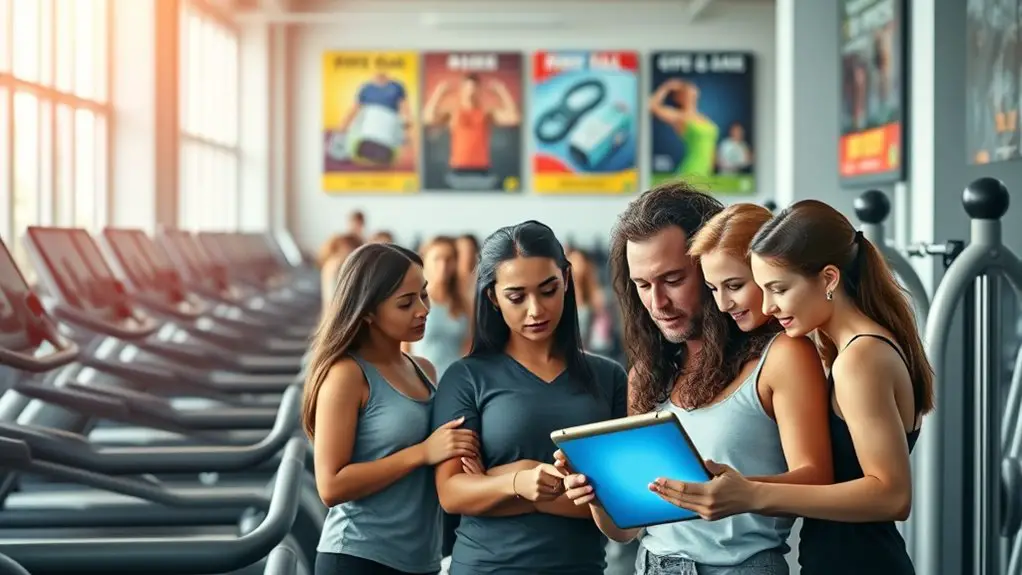
Ever wondered what others think about that shiny new treadmill before you make the leap? Reading reviews and testimonials can provide invaluable insights into customer experiences that you won’t find in the product description. Look for detailed reviews that highlight both pros and cons—this balance helps you make an informed decision.
Consider checking multiple sources for product comparisons. These can reveal how your potential purchase stacks up against similar equipment, shedding light on the best value for your money. Pay attention to recurring themes in customer feedback, like ease of assembly or effectiveness of the workout.
Don’t just focus on the star rating; explore the specifics. If a treadmill consistently receives praise for its durability and performance, it’s likely worth your investment. By harnessing the power of reviews, you’ll avoid falling for flashy marketing and instead choose equipment that truly meets your fitness needs. Additionally, look for insights on how the equipment supports an effective cardio workout, as this can significantly impact your weight loss journey.
Avoid Trends and Fads
While it’s tempting to jump on the latest fitness bandwagon, avoiding trends and fads is essential for making smart equipment choices. Gym trends often come and go, leaving you with equipment that may not fit your long-term goals. Instead, focus on versatile tools that stand the test of time. Here are three key factors to evaluate:
- Longevity: Will this piece of equipment still be relevant in a year?
- Functionality: Does it serve multiple purposes, or is it just a one-trick pony?
- Personal Fit: Does it align with your workout style and fitness goals? Additionally, consider incorporating options like skipping rope, which improves cardiovascular fitness and can be a timeless addition to your routine.
Set a Budget
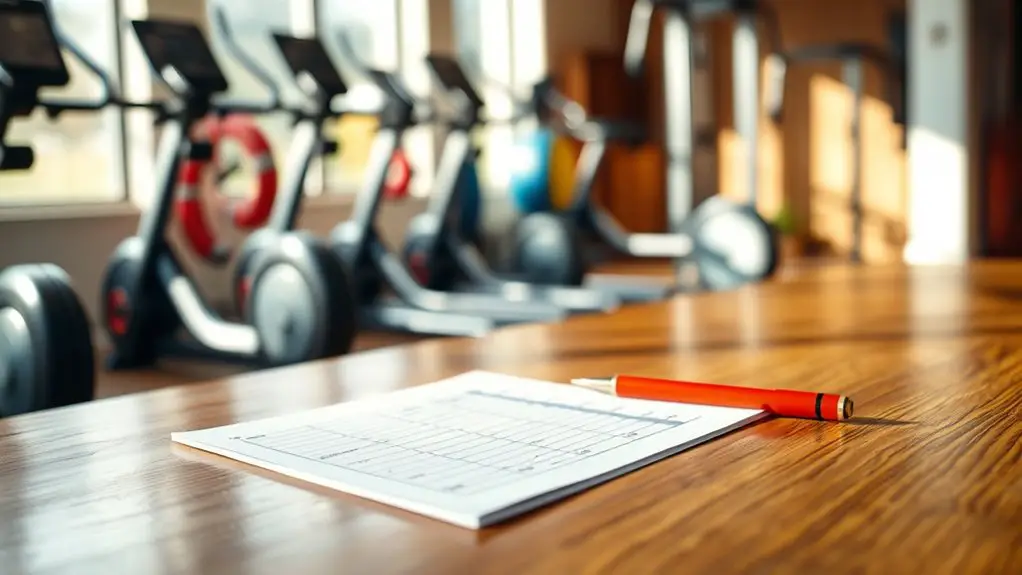
Setting a budget is essential before you start shopping for gym equipment. Think about your fitness goals and assess what you already own, so you don’t end up buying duplicates. Don’t forget to factor in maintenance costs, as they can add up over time and impact your overall investment.
Determine Your Fitness Goals
How can you guarantee that your gym equipment investments truly align with your fitness aspirations? By determining your fitness goals first. Here are three essential steps:
- Conduct Fitness Assessments: Understand your current fitness level and identify areas for improvement. This will help you set realistic, achievable goals.
- Define Your Objectives: Are you looking to build strength, improve endurance, or lose weight? Clearly articulating your goals will guide your equipment choices.
- Implement Goal Tracking: Regularly monitor your progress to ascertain you stay on track. This will help you adjust your equipment needs as your fitness journey evolves.
Aligning your equipment purchases with your fitness goals not only provides motivation but also maximizes your investment. Choose wisely!
Assess Your Current Equipment
Many gym-goers overlook the importance of evaluating their current equipment before making new purchases. To avoid wasting money, take a moment to assess your needs and identify what you already have. Look at the equipment in your home gym: do you really need that extra set of dumbbells, or are your existing ones sufficient for your workouts? By evaluating your current gear, you can determine what’s necessary for your fitness journey. This helps you avoid impulse buys and guarantees you’re investing in equipment that truly enhances your routine. Setting a budget becomes easier when you know what you need versus what you want. Prioritize your purchases wisely, and your workouts will become more effective without breaking the bank.
Factor in Maintenance Costs
While it might be tempting to focus solely on the initial purchase price of gym equipment, don’t overlook the ongoing maintenance costs that can add up over time. Think of these maintenance expenses as part of your long-term investment. Here are three factors to reflect on:
- Repairs: Equipment can break down, leading to unexpected repair costs.
- Replacement parts: Regular wear and tear may require you to buy parts like belts or cables.
- Maintenance services: Some equipment may need professional servicing, which can be pricey.
Focus on Quality Over Quantity
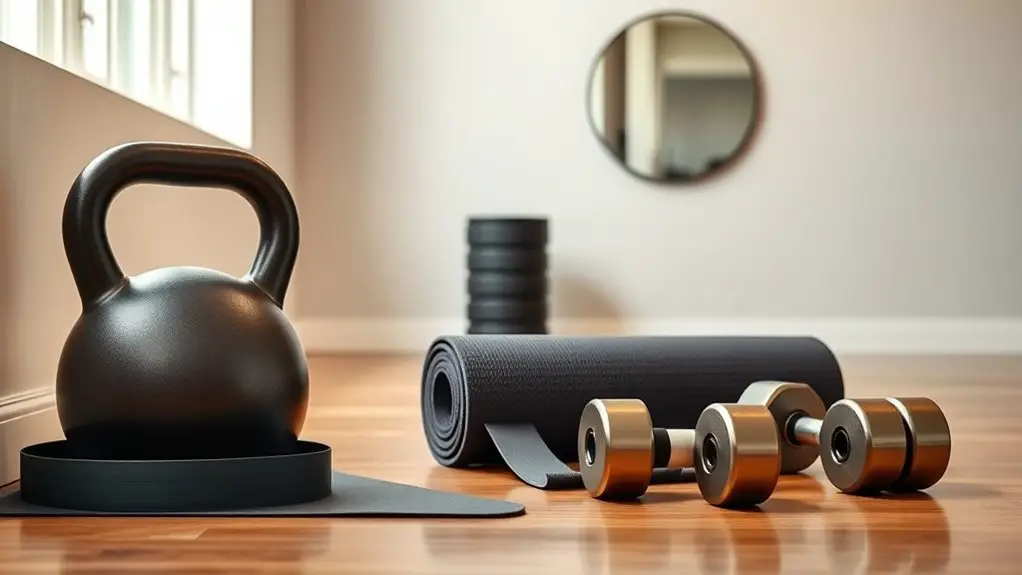
When you’re looking to invest in gym equipment, prioritizing quality over quantity can make all the difference in your fitness journey. Choosing equipment made from quality materials guarantees durability and performance, ultimately leading to a better workout experience. While it might be tempting to buy multiple low-cost items, investing in fewer high-quality pieces is a smarter, long-term investment. Additionally, consistency in physical activity is key to sustaining motivation, making it essential to have reliable equipment that supports your fitness goals.
Here’s a quick comparison to illustrate:
| Quality Equipment | Low-Cost Equipment |
|---|---|
| Built to last | Prone to breakage |
| Offers better performance | May not meet expectations |
| Fewer repairs needed | Frequent maintenance |
| Enhances workout efficiency | Often underperforms |
| Greater user satisfaction | Can lead to frustration |
Seek Professional Advice
Investing in quality gym equipment is just one part of ensuring a successful fitness routine; seeking professional advice can be just as important. A personal trainer can help you avoid costly mistakes by providing tailored guidance and support. Here’s why you should consider a fitness assessment before making any purchases:
- Customized Recommendations: A trainer can evaluate your fitness level and goals, suggesting equipment that aligns with your needs.
- Proper Technique: Learning how to use equipment correctly can prevent injuries and enhance effectiveness, ensuring you get the most out of your workout.
- Avoiding Fads: With their expertise, trainers can help you distinguish between essential equipment and passing trends, saving you money in the long run. Additionally, they often have experience with clients of varying fitness levels, which allows them to provide insights that cater specifically to your journey.
Incorporating professional advice into your fitness journey makes your investment in gym equipment more worthwhile, ensuring you’re set up for success.
Frequently Asked Questions
How Can I Determine if a Piece of Equipment Is Worth the Price?
Imagine you’re a treasure hunter, sifting through options to find the gem that’s worth your time and money. To determine if a piece of equipment’s worth its price, conduct a price analysis and feature comparison. Look at similar equipment, weighing their costs against the features offered. If it stands out as a solid investment with unique benefits, it’s likely a treasure worth adding to your collection. Don’t settle for fool’s gold!
What Are Some Red Flags When Evaluating Gym Equipment?
When evaluating gym equipment, watch for red flags like poor brand reputation. If a company has consistent negative reviews, it’s a sign to steer clear. Additionally, inspect the equipment’s durability—if it feels flimsy or isn’t well-constructed, it likely won’t last. Compare warranties; a shorter warranty often indicates a lack of confidence in the product. Trust your instincts; if something feels off, it’s best to look for a more reliable option.
How Often Should I Reassess My Gym Equipment Needs?
You should reassess your gym equipment needs at least every six months. This frequency interval allows you to evaluate how your fitness goals evolve and whether your current equipment still meets those needs. As you progress, your workouts might change, and so might the equipment that best supports your journey. Keeping up with equipment evolution guarantees you’re maximizing your investment and staying motivated in your fitness routine. Don’t hesitate to adjust!
Can I Buy Used Gym Equipment Safely?
Yes, you can buy used gym equipment safely if you follow a few safety tips. Look for reputable sellers and inspect the equipment thoroughly for wear and tear. Check for any recalls on specific models to guarantee you’re making a safe choice. The benefits of used equipment include cost savings and often better quality than new budget options. Just make certain you’re buying from trustworthy sources to avoid any potential issues.
What Are the Best Brands for Quality Gym Equipment?
Imagine stepping into your home gym, surrounded by high-quality equipment that inspires you to push your limits. When choosing quality gym gear, look for brands with strong reputations like Rogue, Life Fitness, or Bowflex. Customer reviews can be your guiding light, revealing the durability and performance of the equipment. Don’t just settle for flashy marketing; prioritize brands that people trust and have proven their worth in countless workouts.
